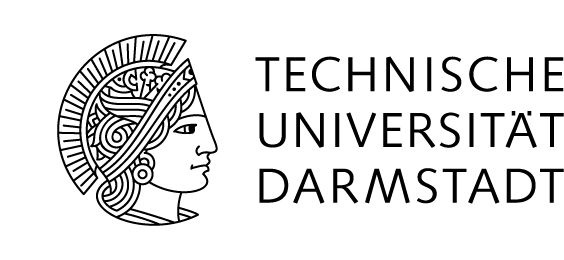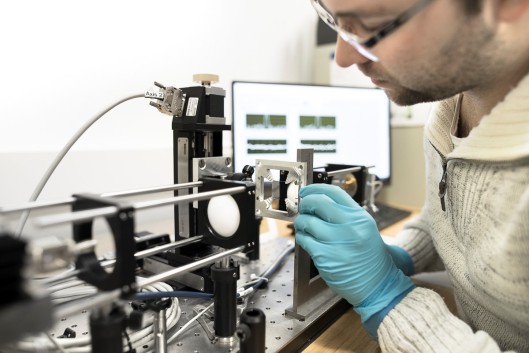Ultrasensitive marker-free biomolecular THz-detection for tumor related analytics: PCR-free sensitivity, biomolecular extension and biological relevance.
Phase 1 and 2
The goal of this project is the fundamental analysis of the capabilities of label–free biomolecular sensing with electromagnetic radiation in the THz frequency range. Hereby, three aspects are of primary interest: PCR-free detection, extension from label-free DNA sensing towards further molecular systems (like analysis of proteins) and evaluation of the biological relevance of such analyses. In this project we investigate and develop a microwave applicator, which combines diagnosis and therapy of tumor diseases. In detection mode, it localises tissue anomalies by dielectric analysis. In therapy mode, it uses microwaves for thermal ablation. This precise and minimally invasive system is MRI-compatible and optimizes control and duration of the therapy.
Project Head:
Prof. Dr. Anja Bosserhoff, FAU Erlangen-Nürnberg, Institut für Biochemie
Prof. Dr.-Ing. Peter Haring Bolívar, Universität Siegen, Lehrstuhl für Höchstfrequenztechnik und Quantenelektronik
Research Team:
M.Sc. Dominik Schaar
M.Sc. Christian Weisenstein
Objectives
Overall aim: Label- and PCR-free detection of DNA and further molecular systems and their biological relevance for tumor analytics.
1. Enhancement of sensitivity: Improvement by 2 to 3 orders of magnitude towards PCR-free direct detection.
2. Extension of application: Extension of the label-free sensing application from DNA sensing towards further molecular systems.
3. Quantification and relevance: Detailed evaluation of the quantification capability and biological relevance of such analyses for tumor analytics.
Abstract
Genomics and proteomics hold promise to revolutionize future health care, targeting profound novel visions like predictive, preventive and personalized medicine. The enormous advance in these fields is closely coupled to the development of powerful, reliable and efficient methods to detect, identify and analyze biomolecules and their complex interaction networks. In the last decades techniques have continuously improved, providing a plethora of information for biomolecular function. The current progress changes from “observing” dependencies, towards “understanding” mechanisms in their full interaction network. This clearly shows that new analytic tools with enhanced capabilities still need to be developed.
THz technologies have demonstrated a huge potential to investigate and detect biomolecular systems, as macromolecular modes and biomolecular interactions are resonant in this frequency range. This is paving the path to label-free bioanalytic sensing. The goal of this project is the fundamental expansion of biomolecular sensing with electromagnetic (EM) radiation in the THz frequency range. Herein, three aspects are of primary interest:
• Sensitivity enhancement by 2 to 3 orders of magnitude towards PCR-free direct detection,
• Extension of the label-free sensing application from DNA sensing towards further molecular systems,
• Detailed evaluation of the quantification capability and biological relevance of such analyses.
This activity sets upon previous label-free THz DNA activities which have already enhanced sensitivity by 8 orders of magnitude down to an unsurpassed sub-femtomol detection level.
In order to focus this research activity and validate the application relevance of these developments, all our analysis are concentrating on tumor related biomolecular sensing applications. Especially in this field, it is becoming increasingly clear, that the traditional scientific approach attempting to reduce cellular function to individual components (e.g. biomarkers) and signal transduction pathways is insufficient. It is nowadays increasingly evident that the behavior of biological systems, especially those affecting tumors, cannot be attributed to a single molecule or pathway, as they emerge as a result of interactions at multiple levels. In this project it is analyzed and validated quantitatively if THz sensors based on frequency selective surfaces can provide such a multilevel biomolecular detection capability.
Publications
C. Weisenstein, H. Schäfer-Eberwein, D. Schaar, A. Bosserhoff and P. Haring Bolívar “Label-free biomolecular sensing with integrated THz systems,” The 5th Annual Conference of AnalytiX 2017 & The 10th Anniversary of Protein & Peptide Conference, Fukuoka, Japan 22.03.2017 – 24.03.2017
A. Neuberger, C. Weisenstein, P. Haring Bolívar, A. Ibáñez, M. Fragoso, R. Gonzalo, N. Vieweg, P. Leisching “Early invasive fungal infection detection with laser-based Terahertz sensor systems” Deutsche Biotechnologietage 2017, Hannover, Deutschland 05.04.2017 -06.04.2017
C. Weisenstein, D. Schaar, H. Schäfer-Eberwein, A. Bosserhoff and P. HaringBolívar “Ultra-Sensitive Marker-Free Biomolecular THz Detection for Tumor Analysis” to be published in Proceedings of the 47th European Microwave Conference (EuMC), Nürnberg, Deutschland, 08.10.2017 -13.10.2017


